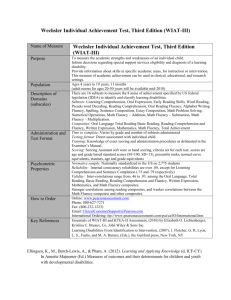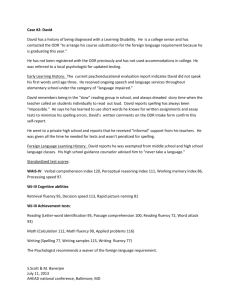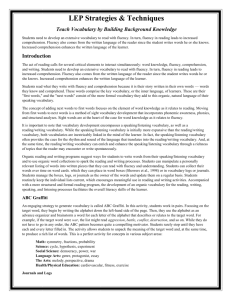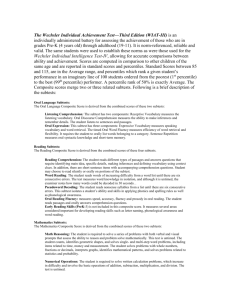Reading Tests - Hastings Public Schools
advertisement
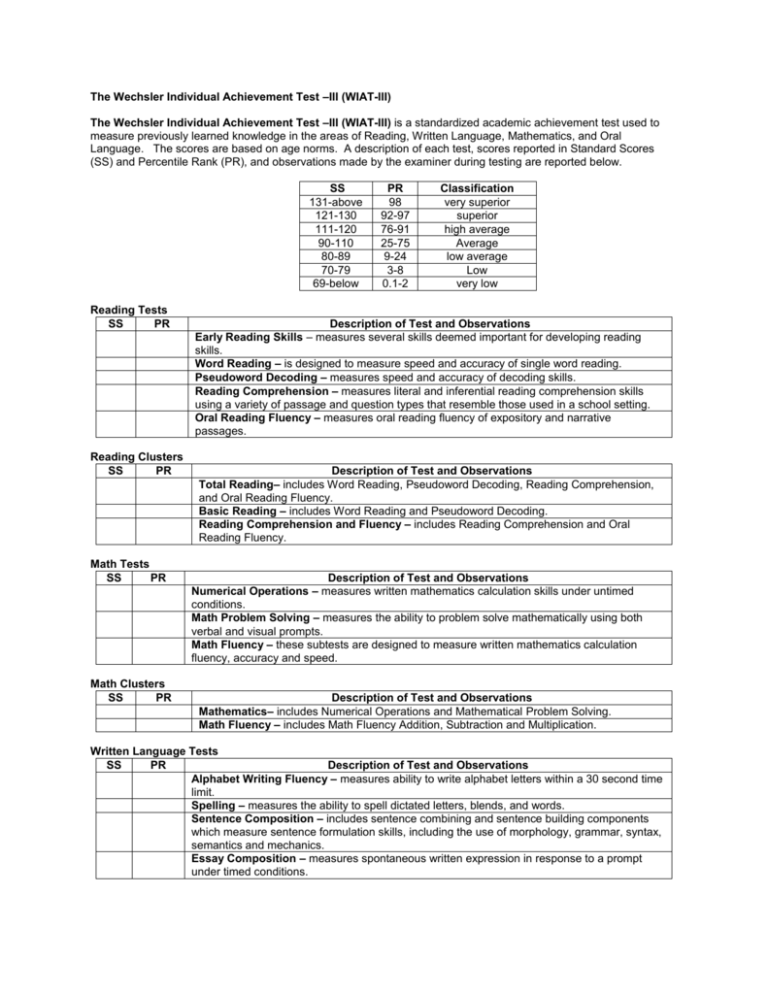
The Wechsler Individual Achievement Test –III (WIAT-III) The Wechsler Individual Achievement Test –III (WIAT-III) is a standardized academic achievement test used to measure previously learned knowledge in the areas of Reading, Written Language, Mathematics, and Oral Language. The scores are based on age norms. A description of each test, scores reported in Standard Scores (SS) and Percentile Rank (PR), and observations made by the examiner during testing are reported below. SS 131-above 121-130 111-120 90-110 80-89 70-79 69-below Reading Tests SS PR Reading Clusters SS PR Math Tests SS PR Math Clusters SS PR PR 98 92-97 76-91 25-75 9-24 3-8 0.1-2 Classification very superior superior high average Average low average Low very low Description of Test and Observations Early Reading Skills – measures several skills deemed important for developing reading skills. Word Reading – is designed to measure speed and accuracy of single word reading. Pseudoword Decoding – measures speed and accuracy of decoding skills. Reading Comprehension – measures literal and inferential reading comprehension skills using a variety of passage and question types that resemble those used in a school setting. Oral Reading Fluency – measures oral reading fluency of expository and narrative passages. Description of Test and Observations Total Reading– includes Word Reading, Pseudoword Decoding, Reading Comprehension, and Oral Reading Fluency. Basic Reading – includes Word Reading and Pseudoword Decoding. Reading Comprehension and Fluency – includes Reading Comprehension and Oral Reading Fluency. Description of Test and Observations Numerical Operations – measures written mathematics calculation skills under untimed conditions. Math Problem Solving – measures the ability to problem solve mathematically using both verbal and visual prompts. Math Fluency – these subtests are designed to measure written mathematics calculation fluency, accuracy and speed. Description of Test and Observations Mathematics– includes Numerical Operations and Mathematical Problem Solving. Math Fluency – includes Math Fluency Addition, Subtraction and Multiplication. Written Language Tests SS PR Description of Test and Observations Alphabet Writing Fluency – measures ability to write alphabet letters within a 30 second time limit. Spelling – measures the ability to spell dictated letters, blends, and words. Sentence Composition – includes sentence combining and sentence building components which measure sentence formulation skills, including the use of morphology, grammar, syntax, semantics and mechanics. Essay Composition – measures spontaneous written expression in response to a prompt under timed conditions. Written Language Clusters SS PR Description of Test and Observations Writing Expression – includes Alphabet Writing Fluency, Spelling, Sentence Composition, and Essay Composition. Oral Language Tests SS PR Description of Test and Observations Listening Comprehension – contains receptive vocabulary and oral discourse comprehension components and measures listening comprehension at the level of the word, sentence and discourse. Oral Expression – contains expressive vocabulary, oral word fluency, and sentence repetition components and is designed to measure skills and competencies that are important for effective speaking vocabulary, word retrieval, flexibility of thought process, and oral syntactic knowledge and short-term memory. Oral Language Clusters SS PR Description of Test and Observations Oral Language – includes Listening Comprehension and Oral Expression. Discussion:

